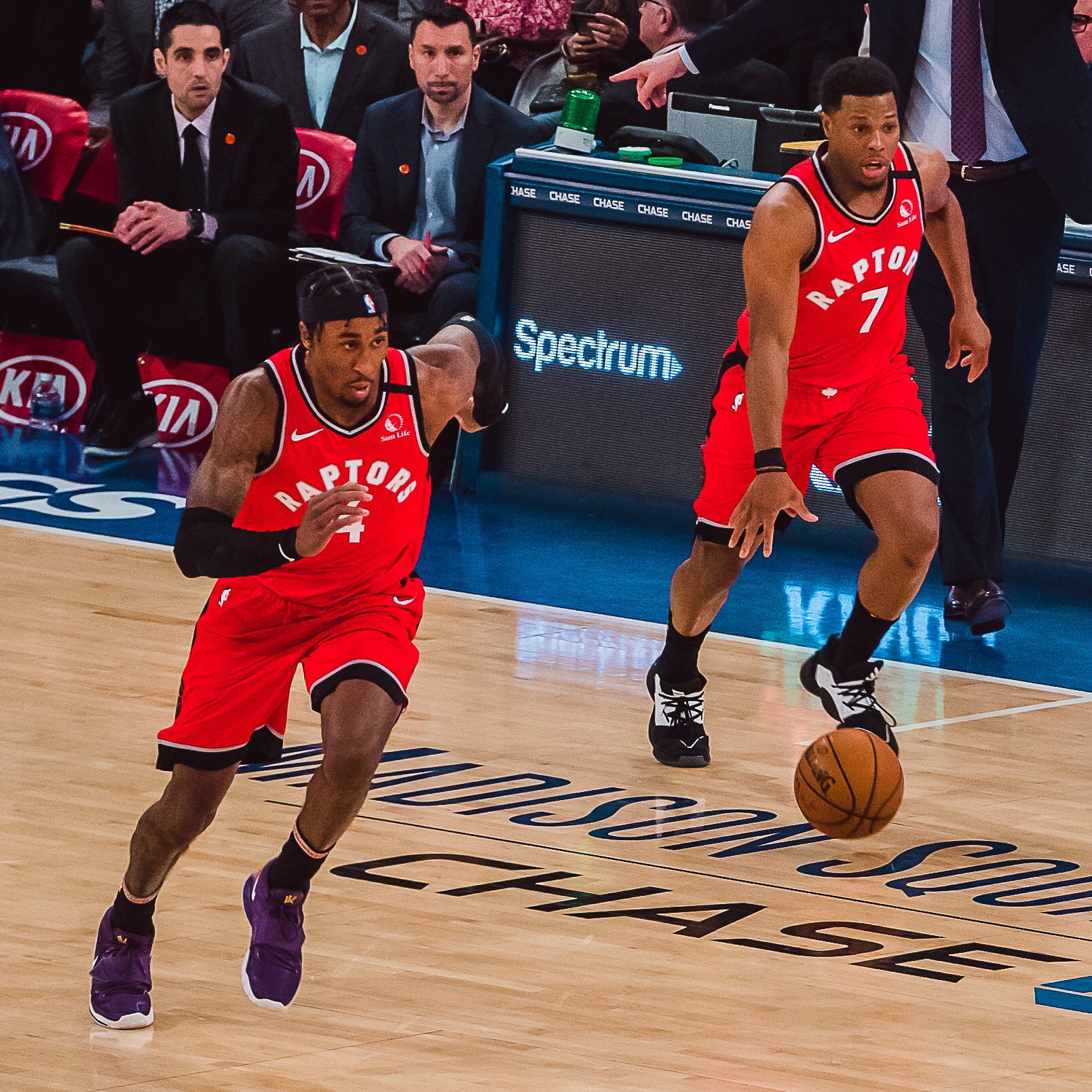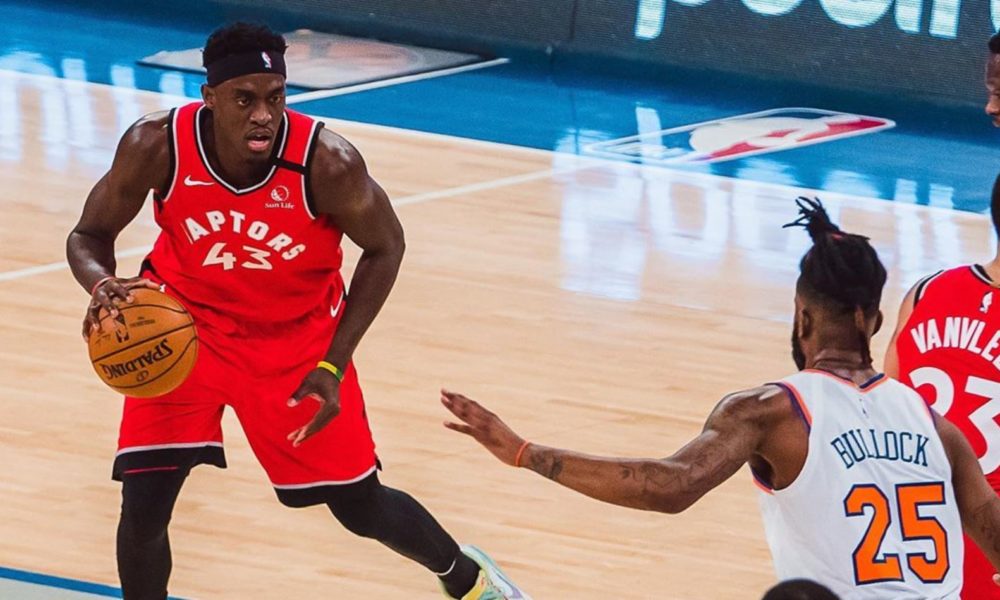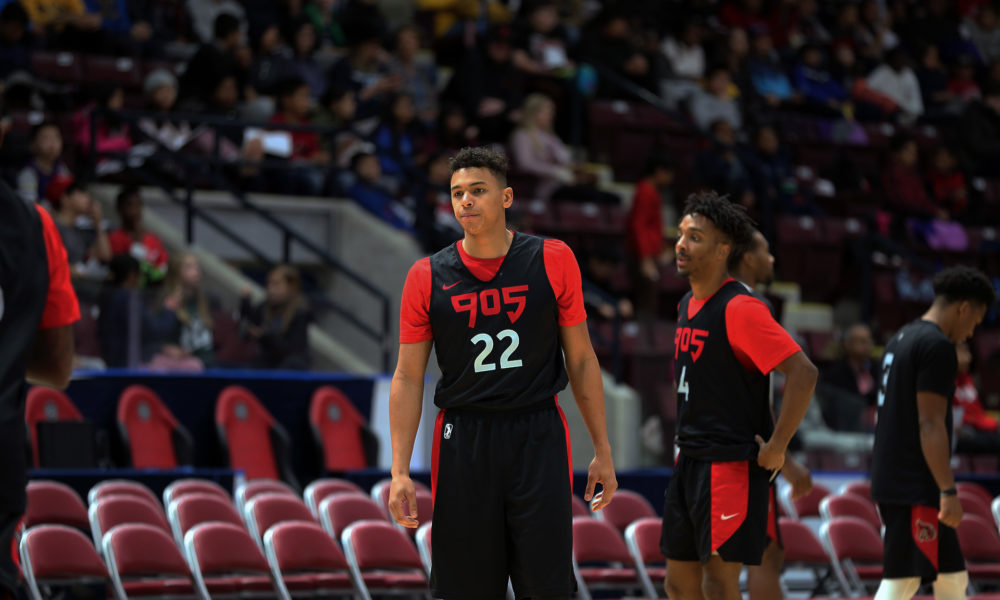The Toronto Raptors’ offense can take on the qualities of an entire solar system. There are all sorts of different planets, different ways to enter sets. There are different orbits, different groupings of players who function together. There is the gravitational push and pull of various movements, designed to always be rotating around one another. And in Toronto’s 118-112 win over the New York Knicks, the sheer diversity of Toronto’s offensive profile was on display.
The Raptors opened the game by establishing its best offensive scorer, Pascal Siakam. He drove twice, easily twisting his way to the rim for layups. Though it seemed the Raptors would find easy offense, they actually stumbled after the first few minutes of the game. New York opened a double-digit lead as their shooters hit everything they flung towards the rim.
When the starters allowed New York to build a big lead, it was Toronto’s bench that closed the gap. Rondae Hollis-Jefferson’s defensive intensity seemed to lift the Raptors out of the mud. His closeouts against shooters and twitching, maniacal energy solidified a defense that was leaking every which way.
The bench offense, on the other hand, used a variety of different entries into the offense. Toronto ran Norman Powell off of staggered screens, letting him launch as soon as he caught the ball. When he wasn’t open running around off-ball screens, he would toggle into a simulated pick-and-roll with the second screener, usually Serge Ibaka, and Powell picked up a few assists throwing flashy bounce passes for buckets. Powell finished with 16 points on 11 shots, as well as three assists. He is at the point where he provides an entire system of offense unto himself.
Ibaka offered offense of his own. He and Marc Gasol, whoever was playing center, would frequently station themselves at the top of the arc, acting as a release valve outside of whatever was taking place on the wings. If New York cheated in to take away the drive, Toronto would whip the ball to Ibaka or Gasol, and they launched from above the arc. The two combined to shoot four-of-six from deep, as Ibaka especially was aggressive and efficient. Fred VanVleet led the Raptors with nine assists, many of them coming to his bigs, either popping for jumpers or rolling for layups.
As the third quarter began, the Raptors began to build a double-digit lead as their starting guards took over the game. Kyle Lowry and VanVleet traded triples, Lowry in the half-court and VanVleet in transition. Both guards do such an excellent job pulling up in the pick-and-roll, or relocating for jumpers around other actions, that their every motion creates space for teammates. Lowry and VanVleet combined to shoot six-of-15 from deep.
Lowry also knew when to grift his way to the free throw line when Toronto needed easy points. Lowry is a master of allowing opponents to bowl him over, often by hitting the breaks while dribbling, so that a bigger man runs him over from behind. He shot 13-of-14 from the line and led Toronto with 26 points on 12 shots. He also had an unbelievable zero turnovers.
When Toronto needed to vary the offense, trying to create paint touches, they would enter the ball into Siakam or even Hollis-Jefferson in the post. Siakam hit one gorgeous turnaround fade-away in the post, while Hollis-Jefferson used bully-ball to overpower guards when given the opportunity.
When the dust settled, every Raptor who saw time on the court scored at least two field goals. It was Lowry and Siakam who finished with the most impressive scoring numbers of the night, acting as twin suns around whom the rest of the bodies orbited, but it was the collective rather than individuals who pushed Toronto over the top. The Raptors were outscored by six points during the 32.5 minutes that Siakam and Lowry shared the floor. It was the darkest reaches of the planetary systems, the nether worlds and far-flung comets, the Hollis-Jeffersons and Terence Davises, who contributed just as much to Toronto’s win. Both massively won their minutes; Hollis-Jefferson was plus-18 in the win, and Davis was second on the team at plus-nine.
The win wasn’t without its flaws. Toronto allowed New York to score 28 second-chance points. And though New York is one of the worst-shooting teams in the league, they connected on 13 triples; Toronto had numerous defensive miscommunications and breakdowns. But when Toronto needed to win, it buckled down and won. That’s what good teams do.
And when Toronto needed to win, it turned to its twin suns: Siakam and Lowry. With 24 seconds left in the game, Siakam dribbled around a screen. New York chose to send Siakam’s defender underneath, and Siakam buried the pull-up bomb without hesitation. On the other end, New York threw a desperate inbounds lob to Julius Randle, and Lowry read the play. He knew what was coming, so he waited behind Randle until he caught the ball, and then he bolted unseen from behind, stealing the pass and closing the door on the game. Toronto won with offensive brawn from Siakam and defensive brain from Lowry. Those two plays sealed the game for Toronto. But it was Toronto’s diversity, the sheer variety of planets revolving in the solar system, that separated the Raptors from the Knicks. Toronto can initiate offense from as many different players as they have on the floor, and that can be as devastating a weapon as any single superstar player.



